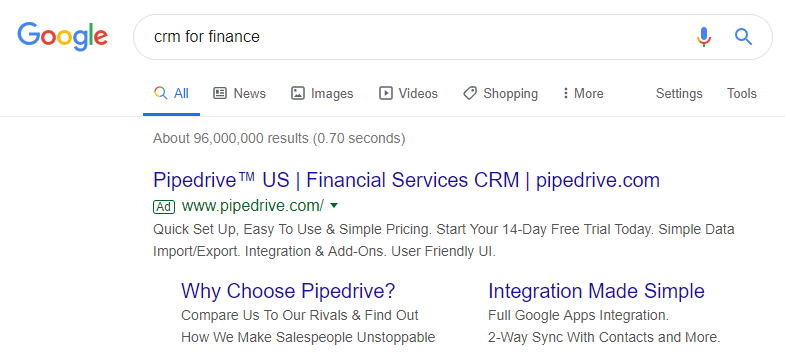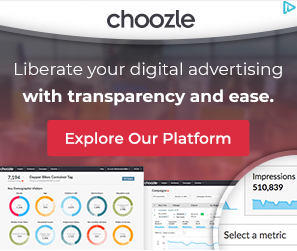Every digital advertiser needs market segmentation to paint a more accurate picture of their customer base. From there, they can group customers according to similarities and create tailored messages to specific segments. Naturally, these highly personalized messages result in more conversions.
There’s no single customer segmentation method that’s likely to boost conversions for every brand, because in every case, one method might prove more effective than another. For example, while geographic segmentation might suffice for one business, another might need to dig deeper and use behavioral or psychographic segmentation.
But, for B2B companies — firmographic segmentation is non-negotiable.
What are firmographics and why are they important?
Firmographics are descriptive attributes of organizations, companies, non-profits, governmental entities, corporations, or any other type of firm.
This data is to organizations, as demographic data is to individuals — both used to segment and target potential prospects.
What is firmographic segmentation?
Firmographic segmentation is the classification of business-to-business customers based on shared company or organization attributes. This practice can help guide marketing, advertising, and sales by providing deeper business insights and ultimately lead to more focused and effective campaign strategies.
Take these ads, for example:

Terminus undoubtedly used firmographic segmentation to target other businesses specifically looking for an ABM solution. Meanwhile, Demandbase recognized the user worked at Instapage and inserted the brand name into the ad copy — attempting to personalize the ad to a target account.
Variables used to create a firmographic target market
There are countless variables B2B advertisers use to create meaningful market segments using firmographics. Some of the most common include:
1. Industry
Industry type is a natural variable because some sectors are more likely than others to be interested in certain products and services. A company in the education industry looking to invest in new classroom technology won’t be interested in a retailer selling construction materials.
Grouping these companies together allows businesses to cater their advertising efforts to each industry, like Pipedrive does with this PPC ad aimed at the finance industry:

This is a more effective approach than promoting the same content to every industry and hoping your message resonates.
(Note: Government organizations can be segmented by federal, state, county, regional, city, and municipality status, and the dominant segments are those associated with NAICS (North American Industry Classification System) or SIC (Standard Industrial Classification) codes. While most businesses use NAICS, either NAICS or SIC can be used to identify firms by industry.)
2. Annual revenue
Looking at revenue is essential because you want to advertise to those companies who can realistically afford what you offer, rather than wasting ad spend on prospects who can’t.
Your software might be more affordable than your competitors’, and therefore more popular among smaller companies with less annual revenue. Naturally, you want to target those smaller companies who are more likely to be excited about your offer than a Fortune 500 company with more revenue that operates on a much larger scale.
WordPress likely uses this ad to reach lower-revenue companies since it’s a free offer for website building:

However, always do your research before making assumptions about potential customers and their revenue because there’s often a completely different story. For instance, a company that usually has more revenue may be experiencing an economic lag, and your inexpensive product might be more attractive to them now.
3. Company size
The number of employees a company has matters because different-sized companies likely respond differently to various messaging and advertising tactics. Look at the example below; an enterprise-level organization probably wouldn’t be interested in this ad for insurance that’s aimed at small businesses:

When using company size as a firmographic variable, ask yourself:
- Is your target business a major company or do they work on a smaller scale?
- Are they growing or downsizing?
- Are your products most popular with small startups, growing mid-size companies, or established industry leaders?
Answering these questions and segmenting your audience accordingly allows for more tailored advertising efforts.
4. Location
Location firmographics refer to where a target business is located geographically — city, state, region, country, continent, etc.
- Are they in a large major city or a small remote town?
- Is the company an international brand?
- What’s the proximity to the company doing the advertising?
Consider a business in Southeast Asia not conducting much business with a firm in Washington state. The business shouldn’t spend much time or budget engaging the Washington firm, or any others outside of its direct region.
However, it’s also key to find out if the advertising company has multiple locations around the globe or if they operate from only one location. While the main headquarters may not be near the customer, there might be another closer location.
5. Sales cycle stage
The information you present to a prospective customer should be relevant to where they are in the buyer’s journey. Are they in a position to make a purchase, or just looking for more information to possibly purchase later?
This example is clearly targeted at prospects in the beginning of the sales cycle who are exploring their options and not yet ready to make a commitment:

It helps lead customers through the sales funnel by building relationships and truly understanding their wants and needs on a psychological level, and then pushing them through to the next stage.
Lead nurturing also helps you learn things like how long it generally takes for a buyer to conduct diligent research and make an informed purchase decision, and how much time might be wasted on someone with no intent to buy anytime soon. Without fully understanding the sales cycle, you can easily waste time and budget this way — advertising to businesses who never intend to buy.
6. Status
The status or structure of an organization refers to the relation of one organization to another, or the legal status of an organization, including any of the following:
- Individual firms
- Standalone entities
- Subsidiaries of larger organizations
- Limited liability corporations (LLC)
- Partnerships
- Publicly owned companies
- Privately held companies
Knowing which organizations find the most value from your products and services can significantly boost the effectiveness of sales, advertising, and marketing strategies.
7. Performance over time
Firmographic segmentation by performance is the grouping firms together based on characteristics related to business execution over time:
- Duration of existence
- Rates of growth or decline
- Profits and losses
Similarities in any of these categories can be an indicator that the firms need a common solution: your product or service.
8. Executive title
The firmographic variables above can all be used in determining your ideal customer profile (similar to a buyer persona, but on a company level). However, they can also help with account-based marketing, which is critical when trying to reach other businesses.
ABM is necessary for engaging those responsible for making purchasing decisions, and executive title firmographics make it easier to build lists of those specific individuals and accounts.
Regardless of your end goal, the key to ABM is targeting the right accounts at the right time — and firmographics data is one of the best ways to achieve this.
Don’t overlook firmographic segmentation
Firmographic market segmentation uncovers valuable insights to inform and improve advertising campaigns. By grouping prospective organizations based on similar attributes, you’re sure to benefit from new advertising opportunities, more relevant messaging, and increased ROI.
The better you know a prospect, the more personal the value proposition you can offer, and the higher the chance it will resonate and result in the desired action. Once you’ve personalized ads to your target audience, make sure you continue the relevancy in the post-click stage.
See how to do that efficiently with an Instapage Personalization demo.

See the Instapage Enterprise Plan in Action.
Demo includes AdMap™, Personalization, AMP,
Global Blocks, heatmaps & more.
